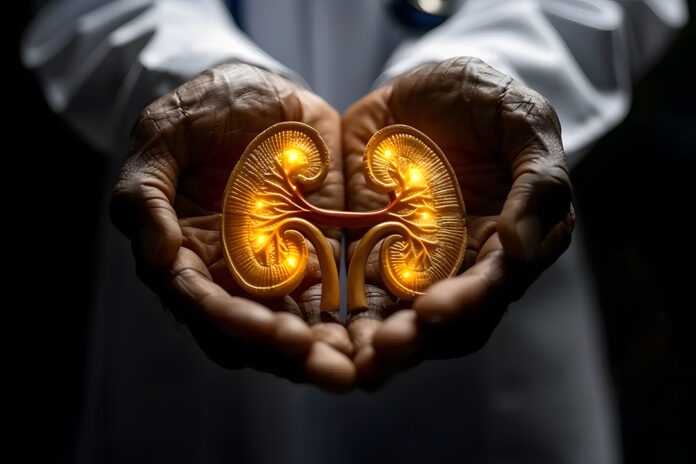More than 1 in 7 adults in the U.S. may have chronic kidney disease (CKD)—and most people don’t know they have it.
Kidney diseases are a leading cause of death in the U.S. About 37 million adults in this country are estimated to have CKD, and most are undiagnosed. Forty percent of people with severely reduced kidney function (not on dialysis) aren’t even aware they have CKD.
CKD is a condition in which the kidneys are damaged and cannot filter blood as well as they should. Because of this, excess fluid and waste from blood remain in the body and may cause other health problems, such as heart disease and stroke.
Most people may not have any severe symptoms until their kidney disease is advanced. However, you may notice that you feel more tired and have less energy, trouble concentrating, a poor appetite, trouble sleeping, muscle cramping at night, and swollen feet and ankles, have puffiness around your eyes, especially in the morning, have dry, itchy skin, need to urinate more often, especially at night.
The level of disease severity has been used to classify CKD into various stages, from persistent kidney damage only (stage 1) to mild reduction in kidney function (stage 2) to moderate to severe reduction in kidney function (stage 3 and 4).
Stage 5 refers to the advanced stage of CKD also termed “kidney failure,” which can progress to end-stage renal disease (ESRD), a term that implies kidney failure has reached the point of requiring dialysis therapy or kidney transplantation to maintain life.
While progression to ESRD is a well-known and serious complication of CKD, it is now well-recognized that premature death and morbidity (especially cardiovascular morbidity) are far more frequent outcomes compared to ESRD.
Chronic kidney disease can affect almost every part of your body. Potential complications include fluid retention, a sudden rise in potassium levels, anemia, heart disease, weak bones, decreased sex drive, damage to your central nervous system, and decreased immune response.
Anyone can get CKD at any age. However, some people are more likely than others to develop kidney disease. You may have an increased risk for kidney disease if you have diabetes, have high blood pressure, have a family of kidney failure, or are older.
CKD is more common in people aged 65 years or older (38%) than in people aged 45-64 years (12%) or 18-44 years (6%). It’s slightly more common in women (14%) than men (12%). CKD is also more common in non-Hispanic Black adults (16%) than in non-Hispanic White adults (13%) or non-Hispanic Asian adults (13%). About 14% of Hispanic adults have CKD.
Blacks have a higher incidence and prevalence of CKD than any other racial or ethnic group. This population also requires dialysis or transplant at younger ages than any other group. These disparities in incidence and prevalence have been proven to be a function of high levels of CKD risk factors in Blacks, including diabetes, hypertension, and obesity.
Despite the tremendous impact of CKD on health, quality of life, and health care costs, the U.S. has thus far not developed a comprehensive, systematic surveillance program to monitor this important condition, according to the Centers of Disease Control and Prevention.
Such a system would help not only in documenting the burden of CKD and its risk factors in the U.S. population over time, but also in tracking the progress of CDC efforts to prevent, detect, and manage CKD and its complications.
If you’re at risk for kidney disease, get your kidneys checked regularly, which is done by your doctor with simple blood and urine tests. Regular testing is your best chance for identifying CKD early if you do develop it. Early treatment is most effective and can help prevent additional health problems.






